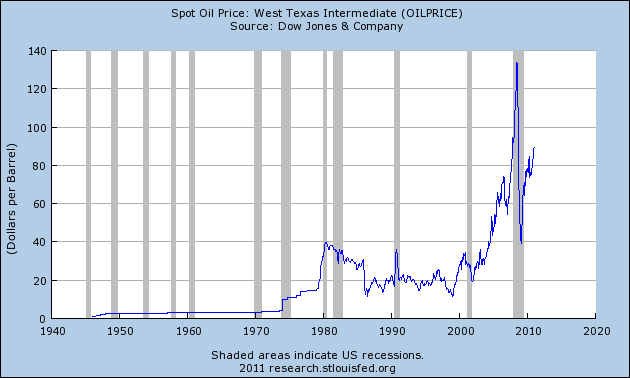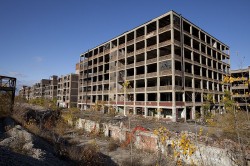 If you and your family are blessed and prosperous this holiday season, you should consider yourself to be very fortunate, because there are tens of millions of other Americans that are desperately hanging on by their fingernails. The Christmas stories that you are going to read below aren’t going to give you any warm fuzzies. They aren’t about “Santa Claus” sliding down the chimney to leave huge piles of presents around the tree. Rather, they are representative of what so many American families are feeling this holiday season – horrible, suffocating, soul-crushing despair. As you and your family gather around the holiday tree on December 25th, millions of other Americans will be facing a Christmas with absolutely no gifts. As you and your family dig into a delicious holiday meal, millions of other Americans will be breaking out the meager supplies they picked up at the food bank or that their food stamps have enabled them to purchase. As you and your family tell stories around the fire, millions of other Americans will literally sit shivering in their own homes because they have no money to heat them. The stories of those who are suffering so deeply very rarely get put on television, but that doesn’t mean that they aren’t very real.
If you and your family are blessed and prosperous this holiday season, you should consider yourself to be very fortunate, because there are tens of millions of other Americans that are desperately hanging on by their fingernails. The Christmas stories that you are going to read below aren’t going to give you any warm fuzzies. They aren’t about “Santa Claus” sliding down the chimney to leave huge piles of presents around the tree. Rather, they are representative of what so many American families are feeling this holiday season – horrible, suffocating, soul-crushing despair. As you and your family gather around the holiday tree on December 25th, millions of other Americans will be facing a Christmas with absolutely no gifts. As you and your family dig into a delicious holiday meal, millions of other Americans will be breaking out the meager supplies they picked up at the food bank or that their food stamps have enabled them to purchase. As you and your family tell stories around the fire, millions of other Americans will literally sit shivering in their own homes because they have no money to heat them. The stories of those who are suffering so deeply very rarely get put on television, but that doesn’t mean that they aren’t very real.
The truth is that there are millions upon millions of American families that have been pushed to the edge of despair by the lack of jobs. In August 2009, only 10 percent of the unemployed had been out of work for 2 years or longer. Today that number is up to 35 percent.
One very disturbing sign of the times is that many churches are now holding “blue Christmas” services to comfort those who are going through hard times. Back during the “good times” such a thing would have been unimaginable, but now they are being held from coast to coast.
All over the nation, food banks, aid agencies and homeless shelters find themselves absolutely overwhelmed this winter. Connie Lassandro, Nassau County’s director of Housing and Homeless Services, recently was quoted in the Huffington Post as saying that she has never seen a greater demand for her agency’s services….
“The new faces we’re seeing are families who have never before faced the risk of actually being homeless. Children don’t understand. ‘Where’s my bedroom? Where’s my toys? Where are my friends?'”
Sadly, the truth is that the U.S. economy no longer produces even close to enough jobs for everyone, so somebody is going to suffer. Today, there are over 6 million Americans that have been unemployed for half a year or longer. It can be really easy to quote economic statistics such as this, but sometimes what gets lost in all the numbers are the very real stories of the people that are actually living through all of this. This year there are literally millions of American families that have sad Christmas stories to share.
On The American Dream blog, a reader of my column identified as “momma loses hope” recently left a comment in which she really opened up and shared her story with us. Sadly, her story is so similar to what so many millions of other young American families are going through this holiday season….
While my husband has experience, and an education, he is yet to find and keep a job that is worth anything, that would be possible to pay back these $400/mnth loans on deferment, let alone keep us going barely.
Despite his greatest effort and attempts, to locate work that would pay anything over $10 an hour in the field he trained for, or some cross over skills in another profession, still nothing has been happening beyond numerous and then dwindling interviews in the last 2 years.
He is currently working at a $10/hr people mill that has outrageous expectations that are near impossible to meet, just to keep your job. Much of what you are supposed to control, is not within your control! That was after having lost unemployment due to its exhaustion, where we had nothing coming in for 30 days. He found this job and went through training. We were thankful to have anything coming in, but it is not going well. Half of his training class is gone either bc they quit or were fired. We are finding out this is the normal for this business.
Prior to the unemployment of 99 weeks, he had a great new job. $60 k a year was good from having some on the job experience at another job prior to that which was an internship, he got. So this was a good option for a chance out of school. They were content with his level of experience of 3- 4 years in IT w/ the hands on education and internship. We moved to relocate for this job 2500 miles away and then he was let go 6 months later, after he was able to clean up a bunch of unresolved problems for them. They wanted someone with 10 years of experience, all the sudden, despite they knew his skill level! Anyhow, the network was held together with tape and bubble gum. So long “best practice” theory.
I guess they had been left in the lurch bc someone left without notice, they advertised for help for months even out of state, and then they hired my husband to fill the desperate gap. Then they didn’t want to keep shelling out the money to keep him. Used him and turned us away, like no big deal; They fired him after 6 months, after we spent all our savings to move to another state… That is when we went on unemployment, and hubby returned for more education, while still looking for a job too.
We moved back home confused as could be. We were helpful that something would come along back home. Things only got worse for the prospect of careers being offered.
I was hoping they were going to improve, but no they have not. We are dying here. But that is not the end of our troubles.
Last year my husband got a $10 a hour job, got H1N1 and Dble Pneumonia and went to the hospital for 14 days or whatever. He was fired by Stream for not being in training and they refused to place him in another training class when he got out the ICU. Then we were left with over $10,000 ( the other $90 grand was forgiven) and we have collectors after us. We survive day by day, we don’t have anything extra to pay anyone or anything….
So, we don’t have any savings,( we used it to relocate to gain employment as I already mentioned) & we have needed things bc we have a baby coming. We haven’t made it long enough to get anything else saved up to rely on, bc unemployment doesn’t pay you what you were making at your job. The unemployment is gone and there is none left, if he loses this job. We don’t qualify for anymore student loans at this stage. This job is shaky at best and these people fire and lose people like there is no tomorrow, and have constant training going on. What a nightmare! We are not able to get a career in the IT Industry that he trained for and paid for with these loans. What do we do? We have a 6 year old and a baby that is on the way in 3 months.
We are so lost and without hope. We trust in Jesus, but what do we do beyond trying to get a better job? It takes effort to gain a job, but there are not enough possiblities hiring as this article states, and I testify to. All my husband does beyond going to this crap job, and playing with our son, is scouring the internet for jobs, and this has been going on for so long!….
I can’t believe this is happening again…..What is a mother and wife to do? We can’t get on track! We don’t drink or drug or sabotage ourselves and our family, and yet we cannot get on track “with the go to school and get a great job” crap I have heard my whole life. Something is broken and cannot be fixed. Sometimes we wonder why God hadn’t just taken my husband’s life when it was in peril and the rest of our family, as it would be better than dealing with this pain and unresolved heartache.
I am so scared and lonely, I could just die. My tears go unnoticed. I sit here without answers. I am one of millions going through the same thing.
Can you imagine being in such a situation? What is perhaps saddest of all is what this economy is doing to so many children. According to one recent study, approximately 21 percent of all children in the United States are living below the poverty line in 2010 – the highest rate in 20 years.
Poverty is absolutely exploding all over the United States. The number of Americans living in poverty has increased for three consecutive years, and the 43.6 million poor Americans in 2009 was the highest number that the U.S. Census Bureau has ever recorded in 51 years of record-keeping.
So, no, this Christmas is not “a season of joy” for many Americans. For example, a commenter on the Unemployed-Friends website identified only as “jobless_in_MA” says that her holidays are going to be quite depressing since she has been out of work for 2 Christmases in a row now….
Well, this is now my 2nd Holiday season in a row being jobless, and this year seems far bleaker than last years. Ive always been the type to love this time of they year. I would look forward to it. I was always the one in the family who would be the great gift giver, especially to the younger members of my family.
Last year I was REALLY upset because I couldn’t do 1/4 of what I normally would do, but still managed to enjoy the season. Im not so sure about it this year.
A lot has happened to my situation in the past year, Ive lost my place, filed bankruptcy, lost some of my dignity, and my marriage is on the rocks.
I am NOT in the holiday season at all, and its really bringing me down.
Usually around now we would be talking about getting a tree. Sometimes we would cut our own tree down, and decorate it together.
We would always have a family holiday party at our place, and I don’t see that happening this year at all.
Yes, every year there are some Americans that are “down and out”, but it is undeniable that the number of Americans that are suffering extreme economic pain has absolutely skyrocketed in recent years. Today, one out of every six Americans is now enrolled in a federal anti-poverty program. As 2007 began, “only” 26 million Americans were on food stamps, but now 42 million Americans are enrolled in the food stamp program and that number keeps rising every single month.
Sadly, there are millions upon millions of Americans that do have jobs and yet barely find themselves able to hang in there. Many Americans have been forced to grab whatever job they can find. In fact, the number of Americans working part-time jobs “for economic reasons” is now the highest it has been in at least five decades.
It is becoming increasingly more difficult to make a living in the United States. Today, half of all American workers earn $505 or less per week.
Could your family get by on $505 per week?
That is something to really think about.
So is anyone doing well?
Well, the only group that saw their household incomes increase in 2009 was those making $180,000 or more.
Not that being wealthy is a bad thing, but what that statistic shows is that the middle class in America is being wiped out.
We are seeing this in community after community across the nation. A reader of this column identified as “Bibi” recently left a comment that did a great job of describing the economic decline and economic despair that we are now seeing all across America….
I have recently traveled from coast to coast and then some. This is a synopsis of what is really going on. Californians seem to be in lalaland. Look good and spend money, lots of it that you don’t have. LA has become very dangerous. Police will knock on your van if you stop to rest with a coffee even if you are at a convenience store. It is illegal to sleep in your vehicle and you will be arrested. Las Vegas is full of poor and homeless wandering around aimlessly. Tent cities and blocks of people living on the streets. dirty and super dangerous. The decline is in your face. Police and security presence are at ‘ad nauseum’ levels. AZ and NM are ****holes. My family refused to get out of the van in Albuquerque. Sedona is still nice but its surrondings make it on borrowed time. Little artsy towns will be taken over quickly when TSHTF. The only city I went to in TX was Amarillo. Didn’t see much but it looked seedy and dirty along the highway. OKlahoma- ***. If I didn’t stay on a military base, I would have broke the speed limit to get through it. The thought of getting gas in Little Rock still gives me nightmares. Enough said. AK- Lots of boarded up towns. Saw this all along Route 40. TN- Stay away from Memphis if you want to live. Nashville is the craziest city I have ever seen. Everyone acts like they are on speed. When you get around Pigeon Forge, Maggie Valley and Gatlinburg, you see the true beauty of this state but they are tourist traps. W. VA is beautiful, but the people are very backward. I could live in Northern W. VA. East coast- VA. Beach has been in decline and was just dubbed the “most drunken city in the U.S.” They must be proud. Lots of trouble here. Big police presence. Took 10 minutes for me to get questioned about my out-of- state plates. N&S Carolina- Bigger cities are dangerous, especially Columbia, SC. Big police presence. Baltimore- be afraid, be very afraid. Keep going. NJ- Something like a horror movie. Do people really live here? Scary and smelly. NYC- Was advised by thruway attendent to “keep going and don’t stop” Overturned cars, tons of high rise ghettos, not a safe place. I was terrified my van would break down. Albany, NY.- my destination. Ghettopolis. Stopped by police within minutes as to why I was driving in city so late. ? Informed it was not safe. Stopped again the next day regarding my plates at a police check. They threatened to tow my van because my “license didn’t come up”. [he was holding it] Stopped again for seatbelt violation. I always wear it but he said he couldn’t see it. Am I imagining it or did I really see National Guard walking around with rifles? Well, I promply left NYS and will never go back. The Florida panhandle is far from perfect and has an ever expanding police force, but it is quiet. Not safe, but quiet.
Once upon a time, there were a few cities and towns around the U.S. that were obviously in a state of decline, but now it is happening everywhere.
In fact, there are many areas throughout the country that scream “economic despair” the moment you drive into them. It is almost as if someone has sucked the life right out of them.
So why is this happening? Well, as I recently pointed out, America’s economic pie is rapidly shrinking. As our national wealth continues to be destroyed, even more American families are going to suffer.
For decades we have enjoyed a debt-fueled binge of prosperity that was unlike anything the world has ever seen. But now the day of reckoning is fast approaching and things are going to get even worse.
So if you are doing really well this holiday season, be thankful, because next year it may be you that has the sad Christmas story.








